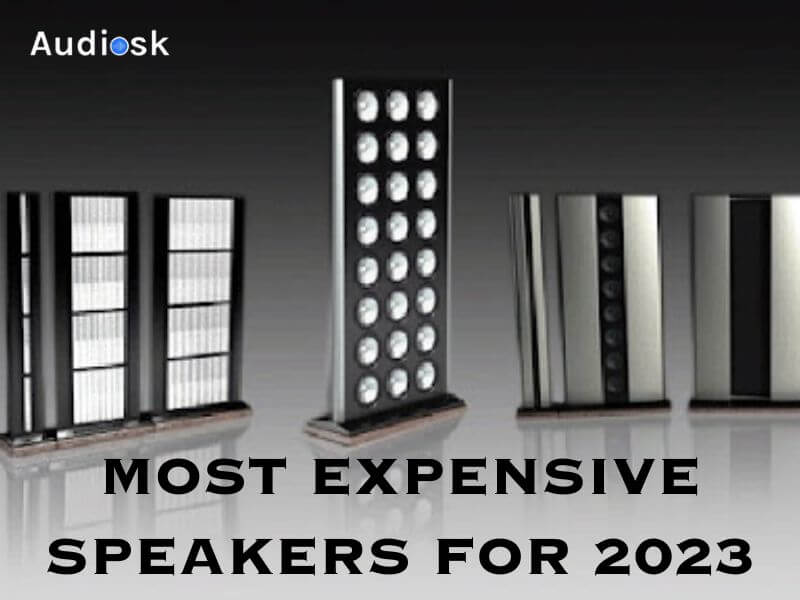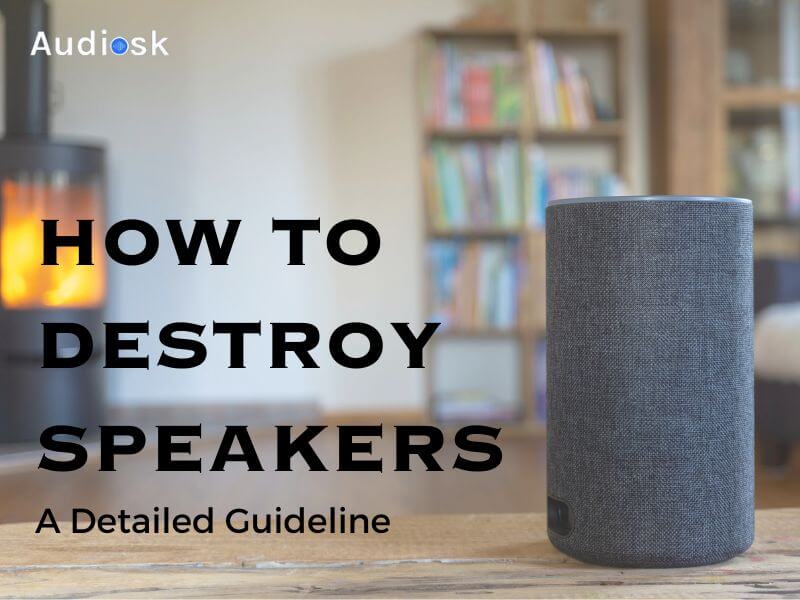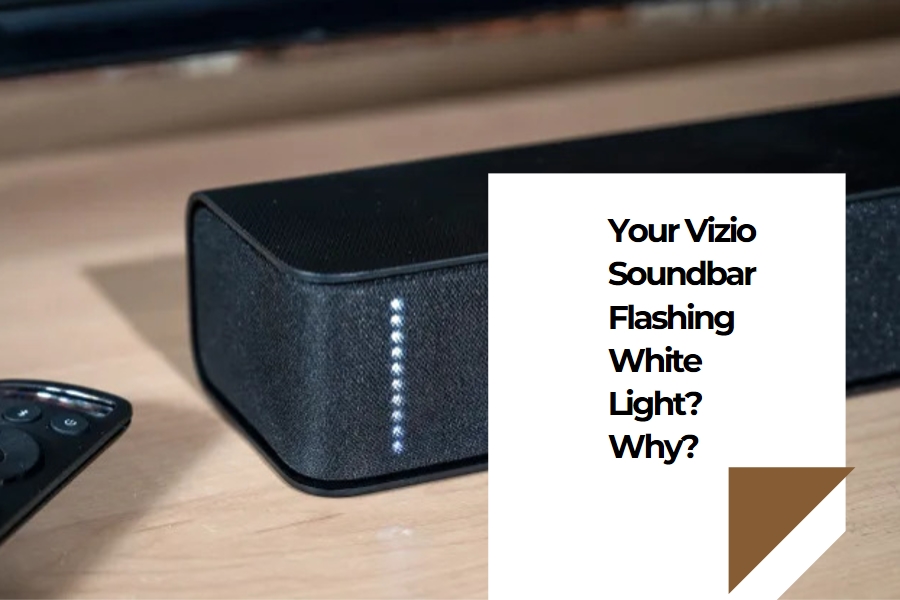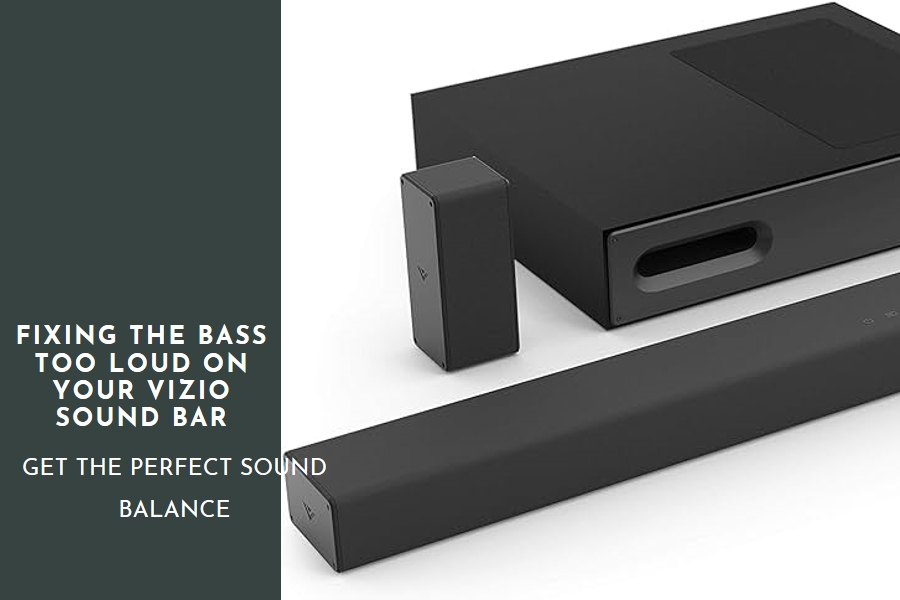At audiosk, here are many different types of speakers with different sound effects. This article will give you a clearer view of speakers and their differences. Let’s find out right here!
What Are Popular Types Of Speakers Today?
There are many different kinds of speakers available today, but these are the most widely used ones:
Stereo speakers
Stereo loudspeakers are the most commonly used speaker for home stereo systems. To provide high-quality sound, stereo speakers come in two varieties: 2-way and 3-way. These are utilized with 2 or more speaker units.
Stereo speakers are usually used in pairs, or you can also use more speaker units to get a bigger sound. To power stereo speaker systems, an audio amplifier or a home stereo audio video receiver (AV receiver) is usually required.
Soundbars
The next most widely used kind of speaker is the soundbar. Soundbars are a type of long bar-shaped speaker used with the TV. The soundbar speaker is placed close to the television and often blends with the entertainment center and television.
The advantage of soundbars is that they are compact, easy to install, and have better sound than TV speakers. Soundbars provide sound that is comparable to other higher-quality speaker alternatives.
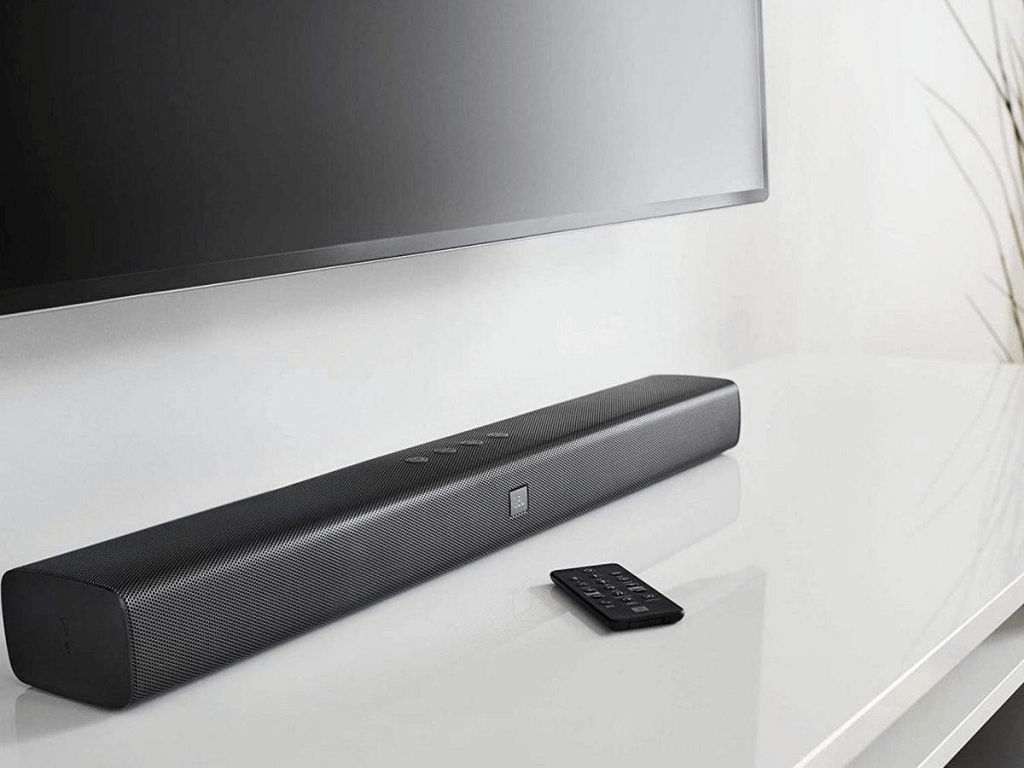
Ceiling or wall speakers
Ceiling speakers and wall speakers are also the most commonly used loudspeakers today. These two types of speakers are more space-efficient than floor speakers or bookshelves. They also produce higher-quality sound. This is because they are typically taller and have a larger surface area, which allows them to produce more bass and treble frequencies. As a result, they are ideal for use in smaller rooms where space is limited but still require high-quality audio output.
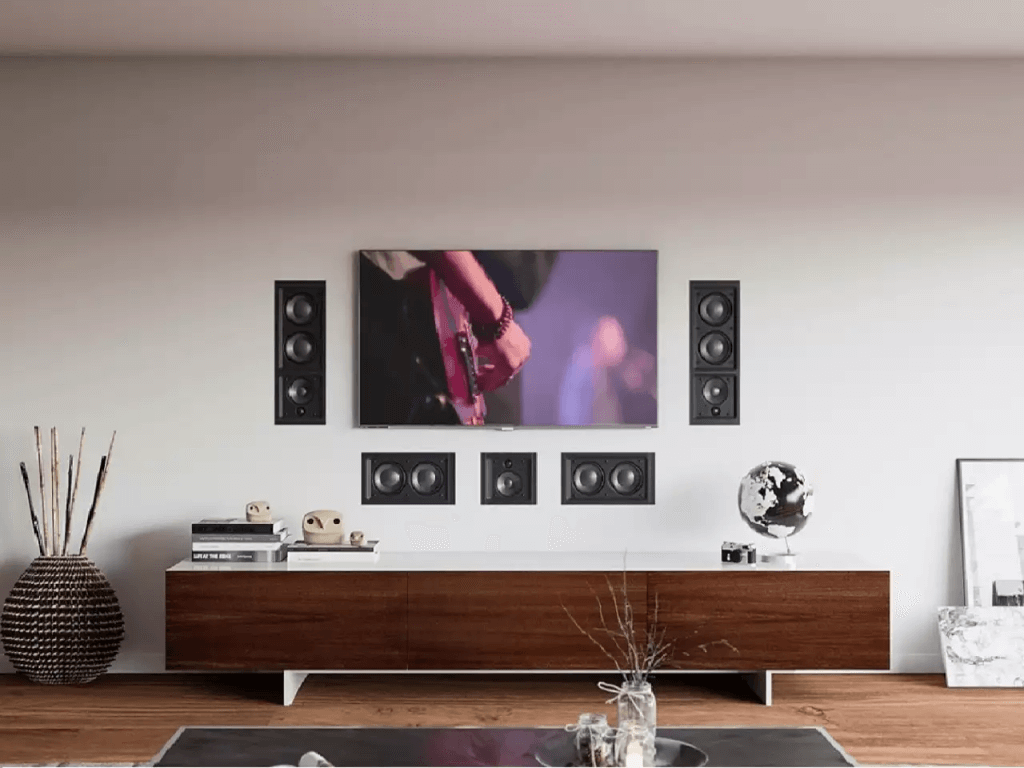
The way the ceiling and wall speakers are installed will also affect the interior of the room. As a result, you should create an installation that is attractive and aesthetically pleasing.
Subwoofers
Subwoofers are also one of the most popular types of loudspeakers today. Subwoofers are used to process the bass to make the music more powerful and striking. As a result, this speaker type is ideal for rock, pop, or jazz fans, as well as individuals who are passionate about music and want to hear quality bass.
The subwoofer size is quite large, bulky, and difficult to move, so it is usually fixed in the living room or recording studio.
What Are Types Of Speakers For Home?
With my experiance, to improving your home’s atmosphere is crucial, and selecting the right speakers is a key part of this. In today’s market, there’s a wide range of speaker types, each designed for different needs. Let’s explore some of the most popular speaker types for homes.
Floor-Standing Speakers: The Audiophile’s Preference
For powerful sound that fills the room, floor-standing speakers are an excellent choice. These tall speakers can produce a wide range of sounds, and some even have built-in subwoofers for deeper bass. They’re great for large rooms or home theaters, offering a full audio experience.
Surround Sound Systems: Complete Audio Immersion
A surround sound system, usually made up of multiple speakers, creates a sound that envelops you, perfect for movie fans and gamers. This setup typically includes speakers at the front, back, and center of the room, often with a subwoofer. It’s ideal for those who want a cinema-like sound at home.
Smart Speakers: Where Convenience Aligns with Technology
In this age of smart homes, the popularity of smart speakers is on the rise. These innovative speakers provide voice control, can connect with different smart devices, and offer streaming services. This makes them a handy option for those who are tech-aware. They’re also excellent for setups where audio is needed in multiple rooms.
What Type Of Speaker Is Designed For High requencies?
Today, we’re focusing on a key player in the speaker family: the type of speaker designed for high frequencies. Let’s dive into the details.
The high-frequency maestro: Tweeters
Tweeters are the specialists in the speaker world when it comes to high frequencies. These speakers are engineered to reproduce the higher end of the sound spectrum, typically ranging from about 2,000 Hz to 20,000 Hz. This range encompasses sounds such as the subtle tinkle of a bell, the sharp sizzle of a hi-hat, or the clear notes of a flute.
Key Features of Tweeters:
- Frequency Range: Specialized in 2,000 Hz to 20,000 Hz
- Types: Dome tweeters for home audio, horn tweeters for professional setups
- Role: Enhancing clarity and detail in high-frequency sounds
Tweeters are essential in a sound system
In our experience, a sound system without a good tweeter is like a painting missing its finer details. Tweeters add depth and clarity to the overall sound, making them indispensable for a balanced and complete audio experience. They work hand in hand with woofers and mid-range speakers to cover the entire spectrum of sound.
Importance of Tweeters:
- Provide clarity and crispness to high-frequency sounds
- Essential for a balanced sound in any audio setup
- Improve the overall audio experience
Tweeter varieties: A look at the options
Tweeters come in various forms, each offering unique benefits. The most common types you’ll encounter are dome tweeters, ideal for home audio systems due to their smooth and detailed sound, and horn tweeters, which are preferred in professional audio environments for their efficiency and powerful output.
Different Types of Tweeters:
- Dome Tweeters: Known for smooth, detailed sound; perfect for home audio.
- Horn Tweeters: Offer powerful output; great for professional audio setups.
From our perspective, choosing the right tweeter can significantly enhance your listening experience. While it’s important to have a well-rounded speaker setup, the role of tweeters in delivering clear and detailed high frequencies cannot be overstated. Whether it’s for music, movies, or any audio playback, tweeters play a pivotal role in bringing out the nuances in high-frequency sounds.
What Are Common Car Audio Speakers?
Loudspeakers used in cars are also divided into different categories. Here are some common types of car speakers.
Coaxial speakers
These are the most widely used car loudspeakers because of their ability to replace factory speakers easily and without fuss. Coaxial loudspeakers are also known as full-range loudspeakers. It’s because they have fully functional subwoofers for bass and tweeters for highs.
The advantage of coaxial loudspeakers is that there are many different shapes and sizes to suit different locations in the car. You just need to remove the old speaker and replace the coaxial speaker.
Component speakers
If you want to enjoy the best sound in your car, you can refer to component loudspeakers. Component loudspeakers are designed with high-end components and own a variety of drivers to deliver high-quality sound.
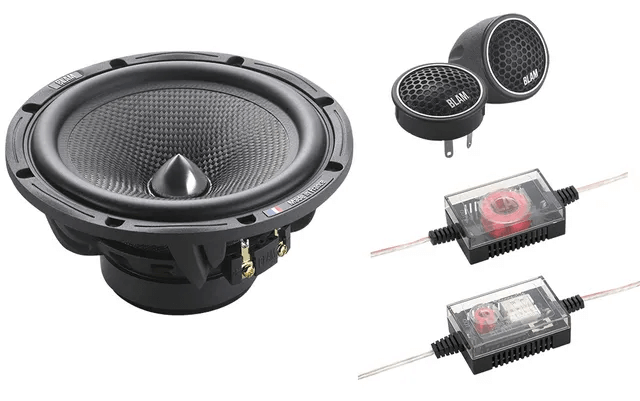
This type of speaker includes a full range of components such as woofers, tweeters, and external crossovers. Component loudspeakers will generate a sound that is more vivid and catchy since their components are made of better materials than coaxial loudspeakers.
To give the music more depth and clarity, a component speaker system allows you to place drivers in various locations all over the vehicle. Additionally, because the crossover network is separate from the tweeter and woofer, internal components can be of higher quality, resulting in a clear distinction between the frequencies supplied to the various drivers.
Tweeters
Also standard are tweeters, which are relatively small (approximately 0.5 to 1.5 inches) automobile loudspeakers. To reproduce high tones in audio (such as cymbals and high hats), tweeters are utilized. Additionally, tweeters improve the clarity and detail of the audio.
This type of speaker is usually installed at a higher position than the woofer in a car speaker system. Additionally, tweeters are suspended and positioned in the center of the woofer in a full-range coaxial system.
Subwoofers
Car subwoofers have a similar construction to home subwoofers, but they can operate at a variety of speaker impedance levels such as 1 ohm, 2 ohm, or 4 ohm. This is owing to the requirements for delivering significant amounts of power in a vehicle as opposed to a home.
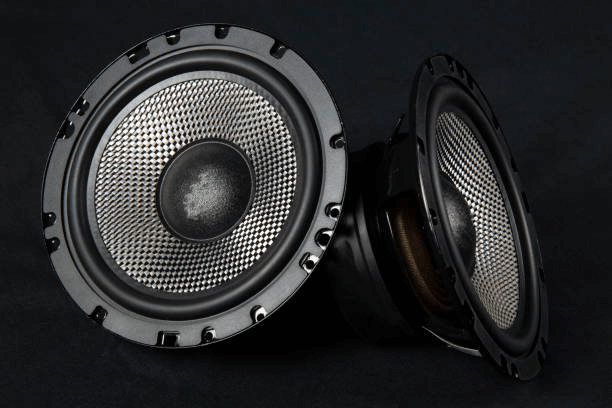
Car subwoofers are typically built with strong metal speaker frames and have big magnets and voice coil wire that can handle a lot of power. Car subwoofers range in size from 8 inches to 15 inches and frequently need an enclosure and a power amplifier.
Read more: Subwoofers Vs Speakers
The Different Types Of Speakers
Besides the loudspeakers already listed, there are countless other loudspeakers available on the market, including:
Bookshelf speakers
The bookshelf speaker is a speaker designed with a compact size, which can be placed on a bookshelf or stand. They frequently use woofers that are smaller in size, such as those that measure 5 1/4″, 6″, or even 4″.
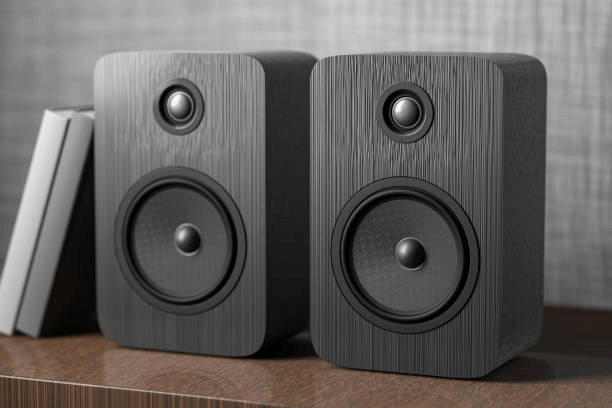
Despite its modest size, the sound quality from the bookshelf loudspeakers is not inferior to large loudspeakers. Because of the variety of shapes, sizes, and costs available for this type of speaker, it is frequently utilized at home.
Floorstanding speakers
Floorstanding loudspeakers have a tall tower design, so they are also called tower loudspeakers. This is a speaker with a similar shape to a bookshelf speaker, but much larger and usually placed on the floor.
Floor-standing loudspeakers usually have more bass and require more room space. Floor-standing speakers can use larger drivers and deliver superior performance.
Ceiling speakers
Ceiling loudspeakers include 2 types: ceiling loudspeakers for indoor use and ceiling loudspeakers for community areas. The typical speaker impedance for ceiling speakers used in home audio systems is 6 or 8. They are often coaxial or two-way loudspeakers with full-range audio by design.
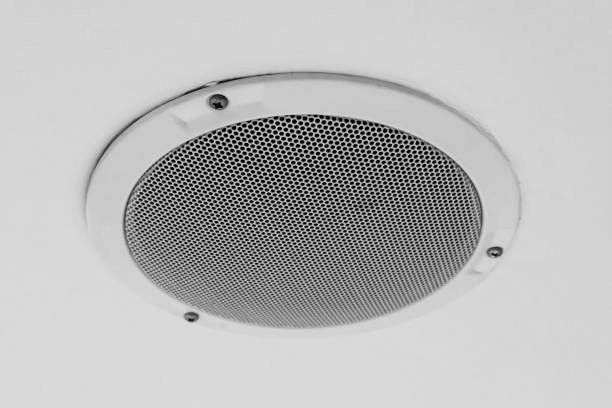
Ceiling loudspeakers are also applied in community spaces such as hospitals, schools, and commercial centers because of their omnidirectional design to help disperse sound widely. When compared to ceiling loudspeakers for home stereo, these often offer lower audio performance and quality.
Bluetooth speakers
This is an extremely convenient wireless speaker, connected via Bluetooth to play sound without any wires. The Bluetooth speaker has a compact design, and uses batteries instead of electricity, so you can fully charge it and take it with you to use everywhere. Because Bluetooth speaker manufacturers place a greater emphasis on connectivity and convenience, sound quality is not overstated.
Outdoor speakers
Outdoor loudspeakers are loudspeakers that are resistant to water, UV rays, humidity, and other weather elements to help you enjoy great sound outdoors. Outdoor speakers can be wireless but are normally powered by a typical home receiver or audio amplifier in your home.
The price of outdoor loudspeakers is often higher than other types of loudspeakers used indoors because they require more advanced construction materials. Outdoor speakers are usually installed in outdoor areas such as swimming pools, gardens, rooftops, etc. to provide music for your outdoor activities and your family.
Computer speakers
Computer loudspeakers, also known as multimedia loudspeakers, are often used with computers to produce better sound. Computer speakers are divided into many different types, but the most common are wired computer loudspeakers and Bluetooth-connected computer loudspeakers.
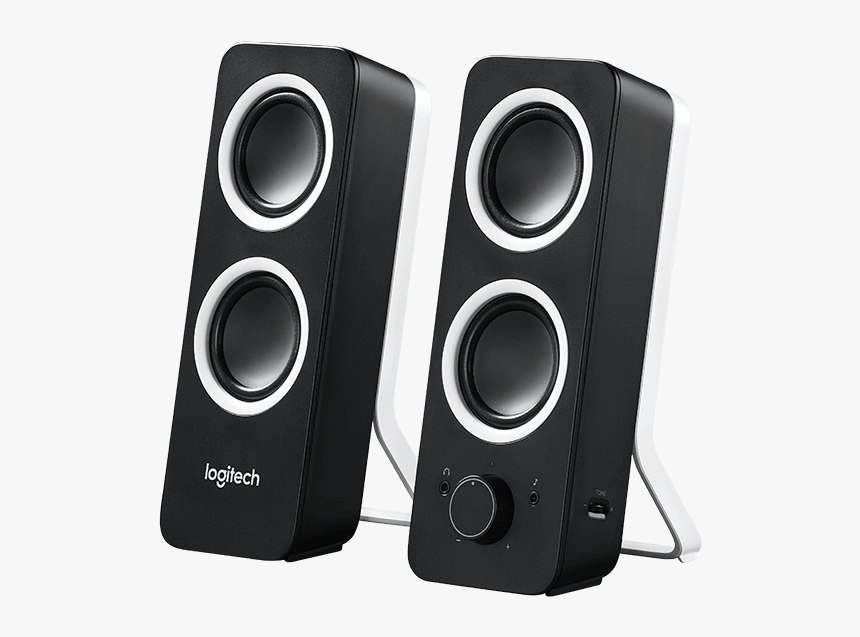
Computer loudspeakers usually use two units of left and right loudspeakers, with a variety of designs and sizes. Nowadays, computer speakers are frequently made to be small to save space and improve aesthetics.
What Are Types Of Speakers By Application?
Now, let’s go over the different types of speakers by application here:
Center channel speaker
In our home theater setup, we’ve positioned the center channel speaker right in the middle of the living room. Its primary role is to reproduce voices and dialogues that come from the center of a movie scene. We chose this setup because it integrates seamlessly with our standard stereo or surround speakers.
This way, all the character voices seem to come directly from the screen, while background music, sound effects, and other dialogues flow from the surrounding speakers. This arrangement really enhances our movie-watching experience, making it feel like we’re right in the middle of the action of the film.
Studio monitor speakers
Compared to standard stereo or surround speakers, studio monitor speakers deliver sound precisely and correctly without introducing color. They are frequently seen in recording studios, where each tone must be authentic.
Since monitor speakers have a flat frequency response for optimal accuracy, make sure your listening area is adequately treated for acoustics and that you are seated close to these speakers. If not, their lack of bass may give the impression that the music is unnaturally loud at low frequencies because you won’t be able to hear distortion coming from a position that is too far away.
Engineers and audiophiles who like to hear music as it was originally composed and recorded would love these speakers.
Should I Replace My Car Speakers Myself?
We, as a team passionate about integrating style with functionality, recognize the appeal of customizing your car’s audio. Let’s explore this topic together.
Assessing Your DIY Abilities
Firstly, consider your own DIY capabilities. The complexity of replacing car speakers varies, depending on your vehicle’s make and the speaker system itself. If you’re skilled in tasks like removing car panels and managing wiring, taking on this project might be feasible.
Key Factors for DIY Speaker Installation:
- DIY Skills: A basic grasp of car audio systems and wiring is essential.
- Required Tools: Ensure you have or can access the necessary tools.
- Time Commitment: Be prepared to dedicate a few hours to the task.
Knowing Your Car’s Audio Setup
Car audio systems can differ greatly. Some vehicles come with straightforward speaker setups, while others feature intricate systems integrated with the car’s electronics. Understanding the specifics of your car’s audio system is crucial.
Factors in Audio System Complexity:
- Integration with Other Systems: Systems linked with navigation or Bluetooth may be more complex.
- Vehicle Model: Certain car models have more challenging speaker systems.
- Warranty Concerns: Self-installation might affect your audio system’s warranty.
Weighing the Pros and Cons of DIY
You can refer to the advantages and disadvantages below:
Pros:
- Savings on Cost: Avoiding professional installation fees.
- Full Control: Choosing and placing the speakers as you prefer.
- Skill Building: An opportunity to enhance your DIY skills.
Cons:
- Potential for Damage: Improper installation could damage the speakers or car interior.
- Time Investment: The process can be lengthy, particularly for beginners.
- Warranty Risks: Installing speakers yourself may void the warranty.
In our view, if you feel confident in your DIY skills and understand your car’s audio system, replacing the speakers yourself can be a rewarding project. However, it’s important to realistically assess the task’s complexity. When unsure, seeking professional help is a prudent decision.
The choice to replace car speakers on your own depends on your comfort with DIY tasks, the intricacies of your car’s audio system, and the risks involved. No matter your decision, the goal is to improve your in-car audio experience.
What Should You Look for in a Portable Speaker?
As a team that appreciates both sound quality and style, we’re here to guide you through essential features to consider when picking a portable speaker.
Prioritizing Sound Quality
The main job of any speaker is to deliver excellent sound. For portable speakers, it’s important to find one that provides clear, balanced audio with a good bass response. Don’t underestimate smaller speakers; many offer impressive sound.
Important Sound Quality Aspects:
- Clarity: Ensure the audio is crisp and clear.
- Bass: Look for a speaker that delivers a rich bass.
- Volume Capacity: It should be loud enough without any distortion.
Long Battery Life for Continuous Play
A key benefit of portable speakers is their mobility, and long battery life is central to this. We recommend choosing a speaker with a battery that lasts several hours to minimize the need for frequent charging.
Battery Aspects to Consider:
- Playtime: Aim for a speaker with at least 8-10 hours of battery life.
- Charging Duration: Shorter charging times are preferable.
- Battery Indicator: Helpful for keeping track of battery status.
Durability for Every Setting
A good portable speaker should be tough enough for different environments. Look for speakers that are weather-resistant, shockproof, and dustproof, especially if you plan to use them outdoors.
Durability Points to Note:
- Weather Resistance: Crucial for outdoor activities.
- Build Quality: A robust build is vital.
- Protection: Features like shockproof and dustproof are beneficial.
Seamless Connectivity
In today’s connected world, easy connectivity is a must. Most portable speakers come with Bluetooth, but it’s wise to check the connection range and how easily it pairs. NFC for quick pairing is an added advantage.
Conclusion
At audiosk, hope this article has helped you get more useful information about different types of speakers. Besides, you can use the knowledge above to pick the kind of speaker that best suits your requirements and preferences.
FAQs


